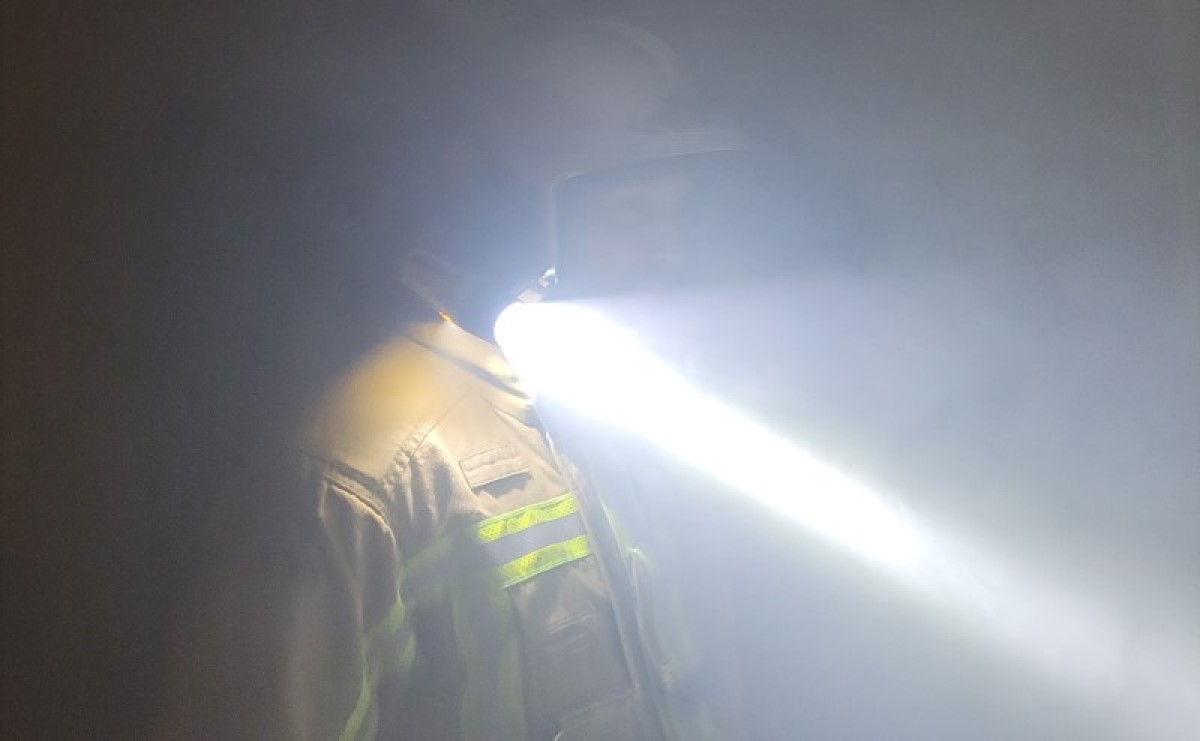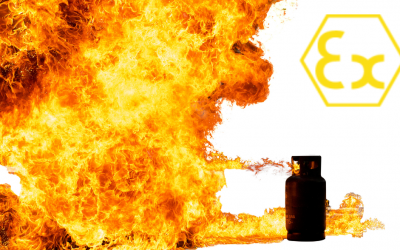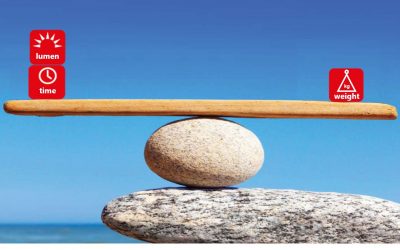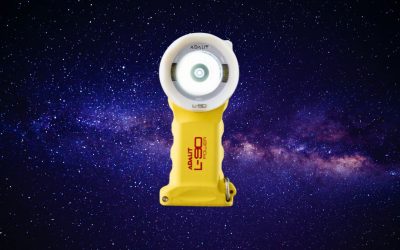Smoke is a collection of tiny solid, liquid and gas particles. Although smoke can contain hundreds of different chemicals and fumes, visible smoke is mostly carbon (soot), tar, oils and ash.
Smoke occurs when there is an incomplete combustion (not enough oxygen to burn the fuel completely). During a complete combustion, everything is burned, producing just water and carbon dioxide. However, when incomplete combustion occurs, not everything is burned. Each particle is too small to see with the human eye but, when they come together, you see them as smoke.
In addition, the smoke can be of different colors (white, yellow, gray, black) and with varying density. Light rays, in their propagation in solid materials, liquids or gases, are absorbed, reflected, transmitted and diffused in a certain amount depending on the particularities of said materials.
When we project a beam of light on a column of smoke, its intensity will be reduced by the absorption and reflection produced by the solid particles of this. Its degree of attenuation depends on the size and shape of the particles, the refractive index, the wavelength and the angle of incidence of light. As a consequence of the reflection, part of the emitted light returns in the same direction from where it comes, and can produce glare.
Depending on the directions of arrival of light to the eye, the dazzling index varies:
-
-
-
- 5º = very high
- Between 5º and 25º = high
- Between 25º and 60º = low
- More than 60º = no dazzling
-
-
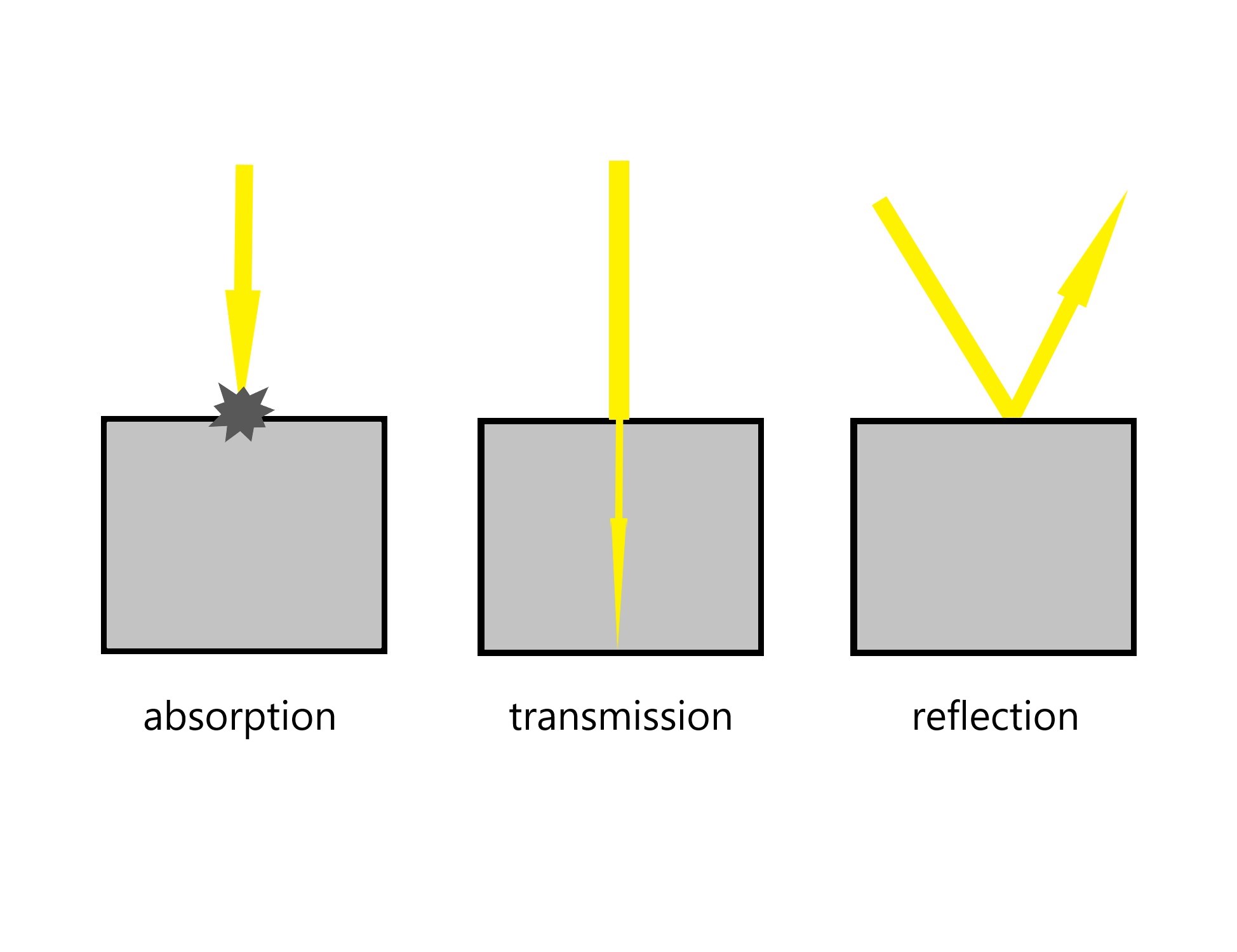
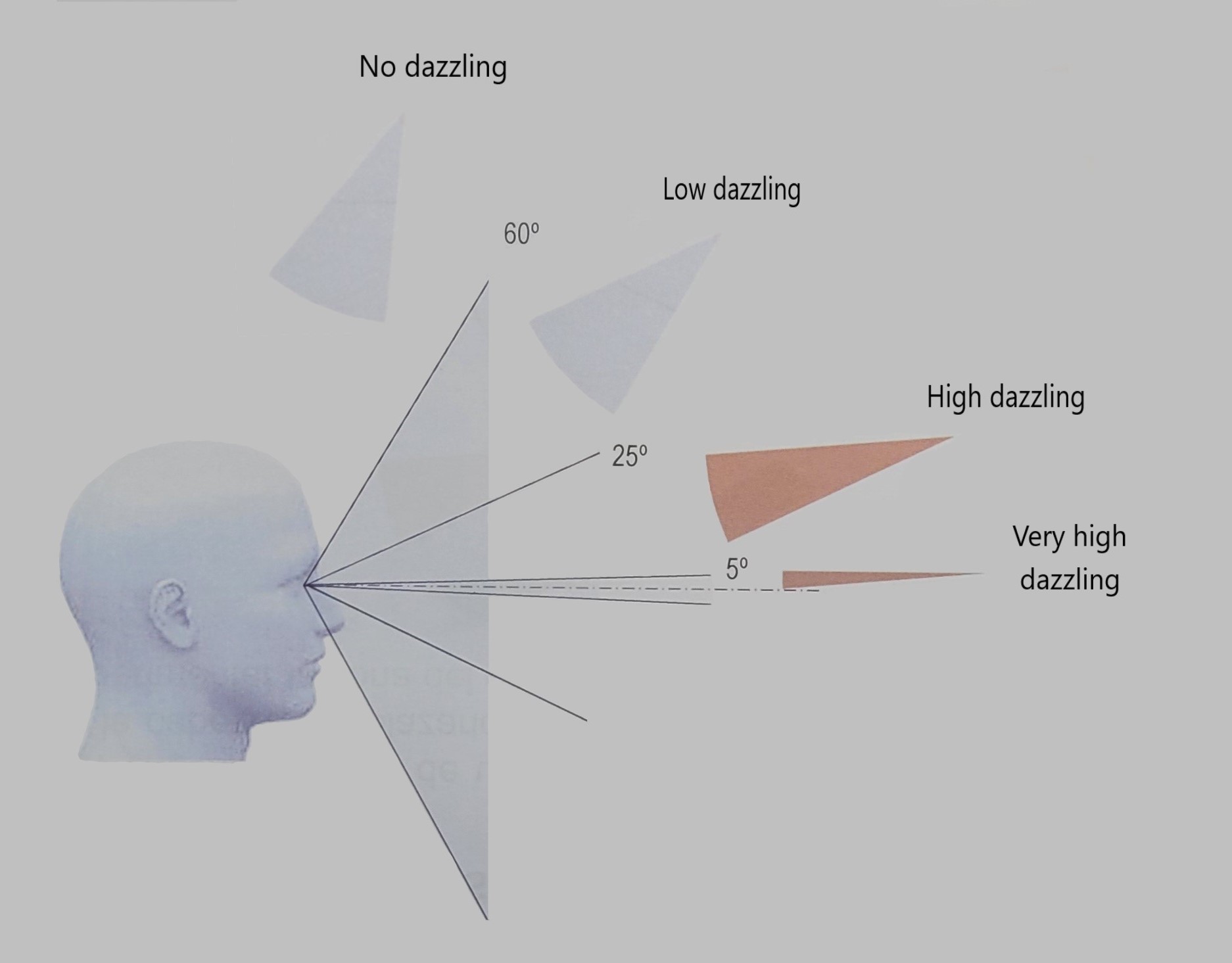
Some flashlight manufacturers promise that, in smoke conditions, a high concentration and high intensity light beam will allow you to pass through it. However, depending on its characteristics, the result may be very different and, instead of providing greater visibility, it may even reduce it.
At Adalit, our goal is to design flashlights that allow the user to select between a concentrated light beam, diffuse or the combination of both, as well as to choose between several levels of intensity, allowing adaptation to very different scenarios.

